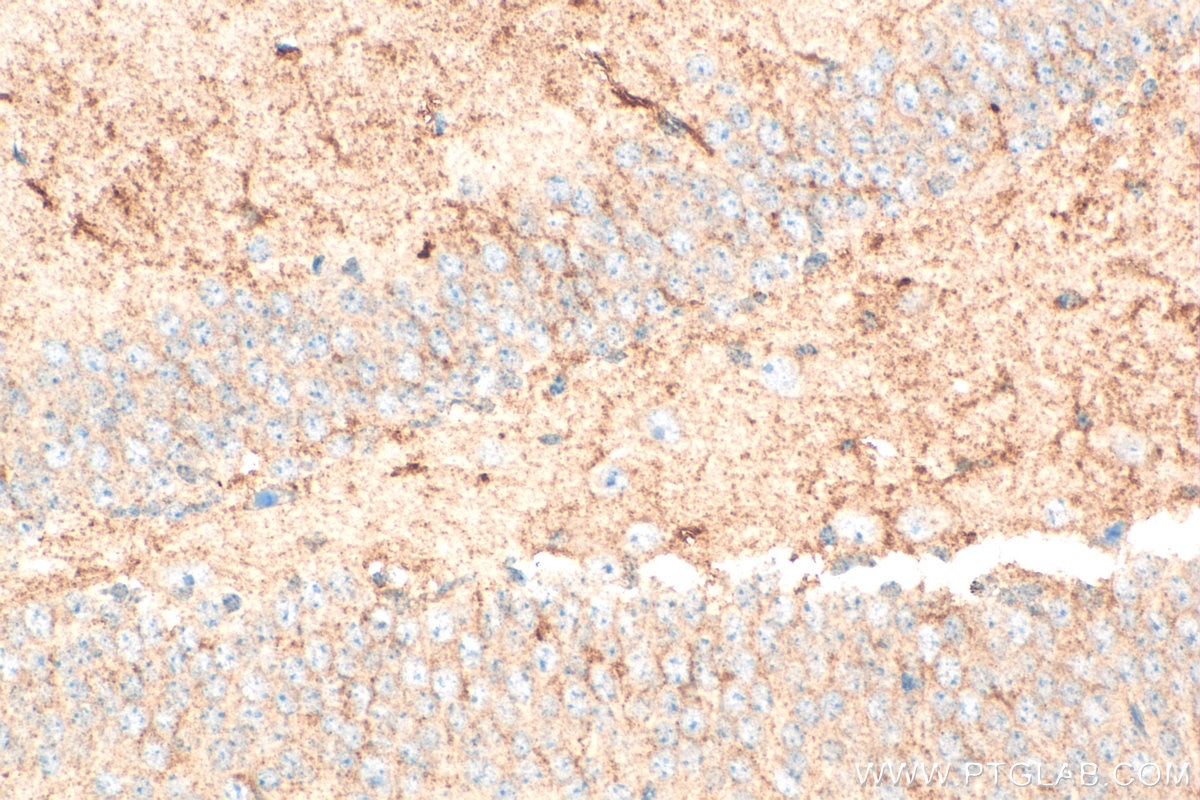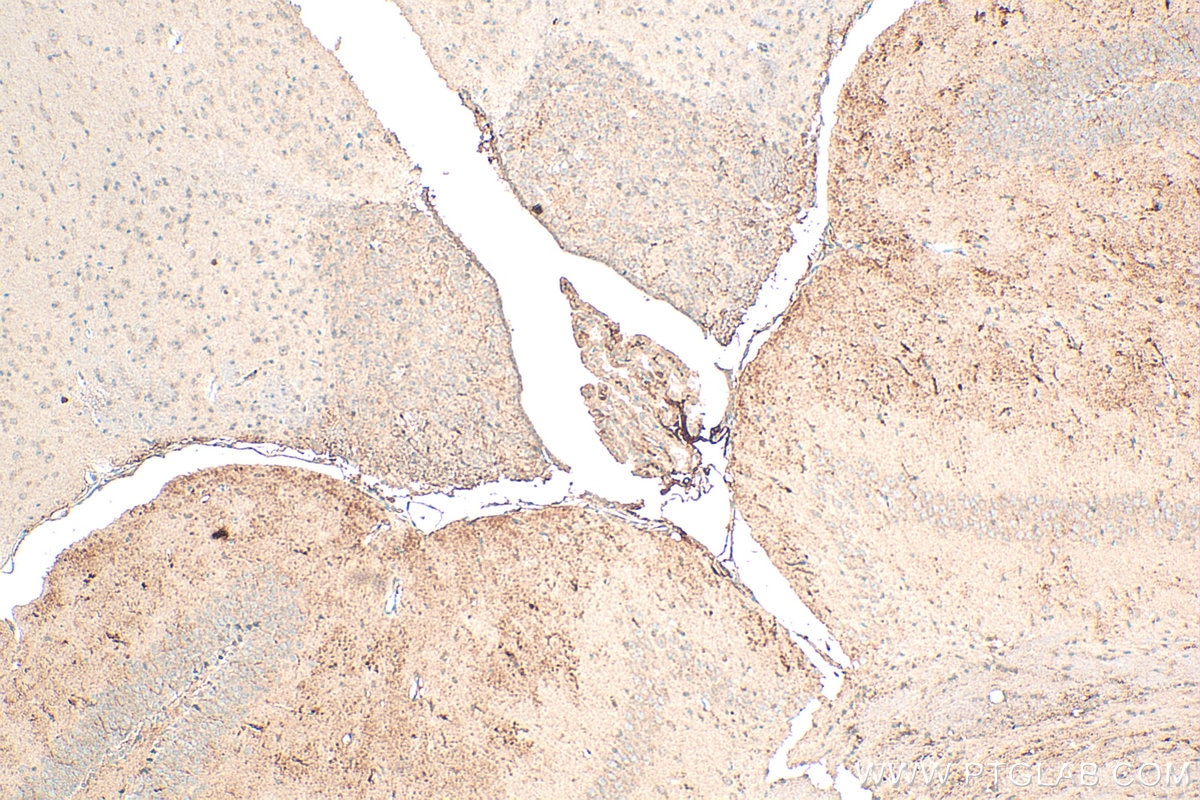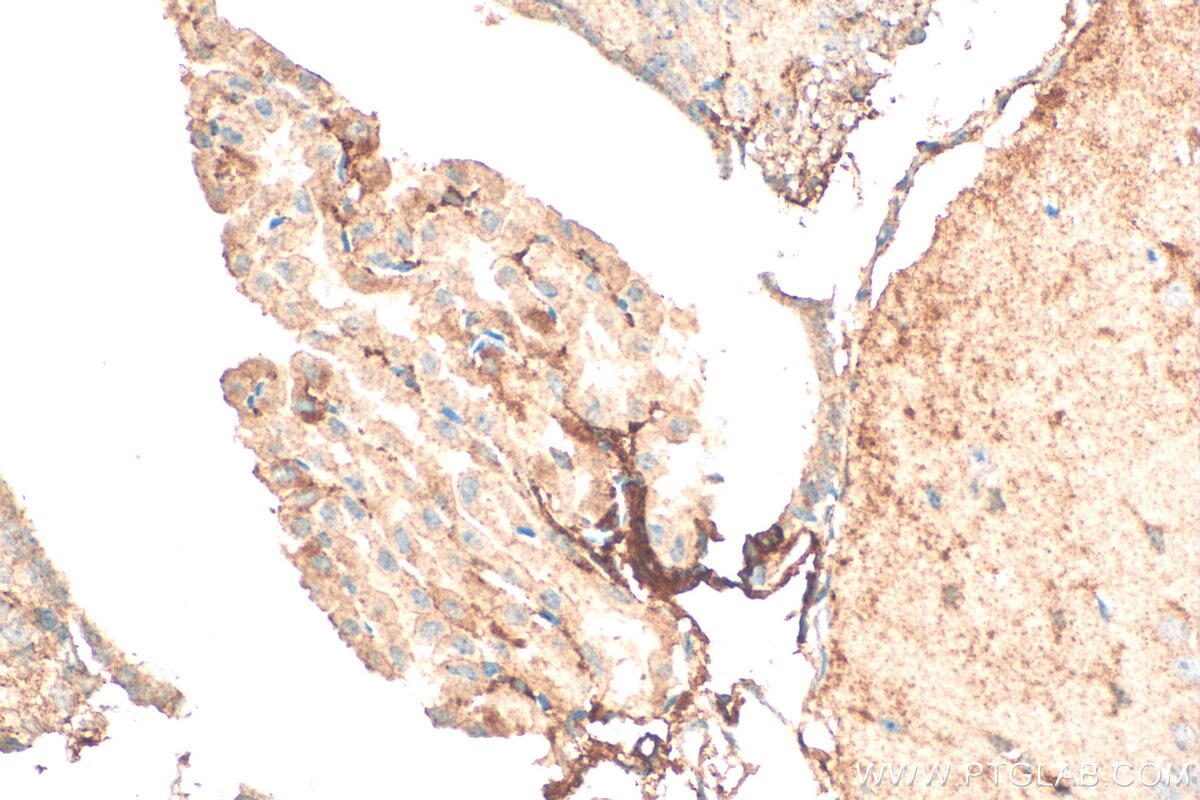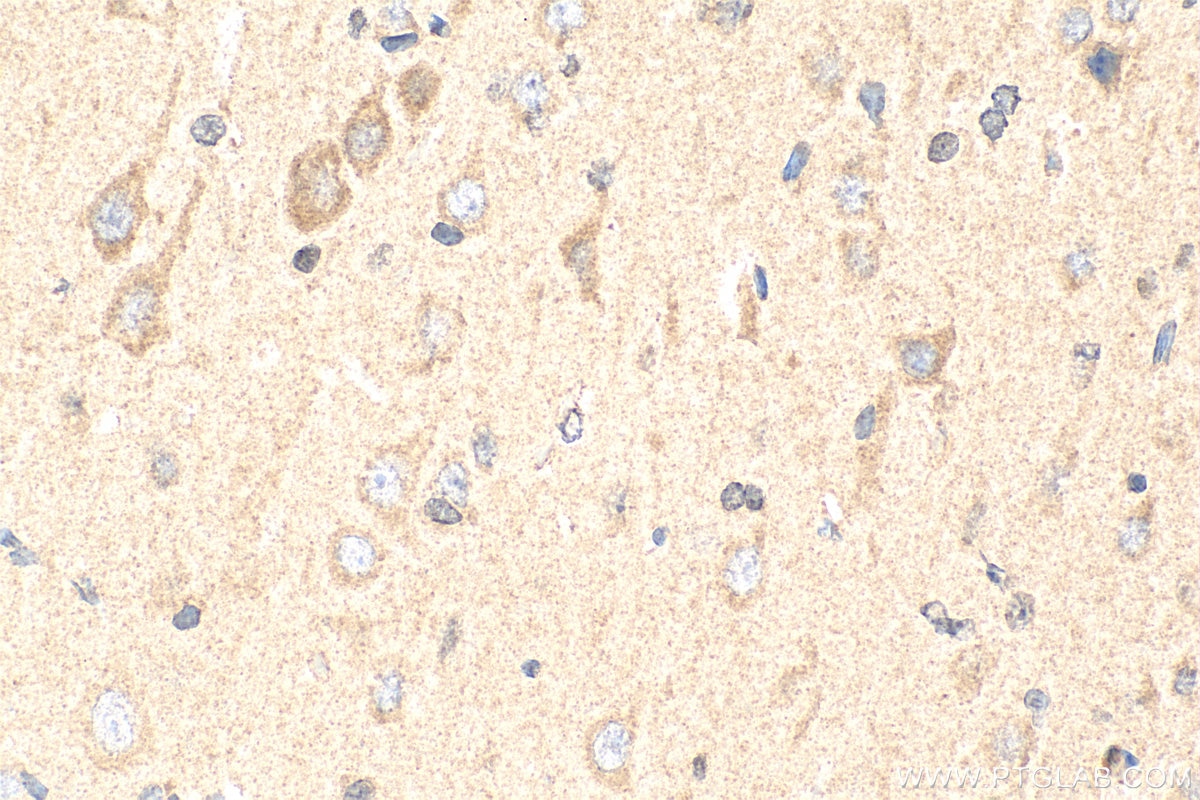Anticorps Polyclonal de lapin anti-Neurotrophin 3
Neurotrophin 3 Polyclonal Antibody for IHC, IF/ICC, ELISA
Hôte / Isotype
Lapin / IgG
Réactivité testée
Humain, rat, souris
Applications
WB, IHC, IF/ICC, ELISA
Conjugaison
Non conjugué
N° de cat : 18084-1-AP
Synonymes
Galerie de données de validation
Applications testées
| Résultats positifs en IHC | tissu cérébral de souris, tissu cérébral de rat il est suggéré de démasquer l'antigène avec un tampon de TE buffer pH 9.0; (*) À défaut, 'le démasquage de l'antigène peut être 'effectué avec un tampon citrate pH 6,0. |
| Résultats positifs en IF/ICC | cellules SH-SY5Y |
Dilution recommandée
| Application | Dilution |
|---|---|
| Immunohistochimie (IHC) | IHC : 1:200-1:800 |
| Immunofluorescence (IF)/ICC | IF/ICC : 1:20-1:200 |
| It is recommended that this reagent should be titrated in each testing system to obtain optimal results. | |
| Sample-dependent, check data in validation data gallery | |
Applications publiées
| WB | See 8 publications below |
| IHC | See 7 publications below |
| IF | See 2 publications below |
Informations sur le produit
18084-1-AP cible Neurotrophin 3 dans les applications de WB, IHC, IF/ICC, ELISA et montre une réactivité avec des échantillons Humain, rat, souris
| Réactivité | Humain, rat, souris |
| Réactivité citée | rat, Humain, souris |
| Hôte / Isotype | Lapin / IgG |
| Clonalité | Polyclonal |
| Type | Anticorps |
| Immunogène | Neurotrophin 3 Protéine recombinante Ag12798 |
| Nom complet | neurotrophin 3 |
| Masse moléculaire calculée | 257 aa, 29 kDa |
| Numéro d’acquisition GenBank | BC069773 |
| Symbole du gène | Neurotrophin 3 |
| Identification du gène (NCBI) | 4908 |
| Conjugaison | Non conjugué |
| Forme | Liquide |
| Méthode de purification | Purification par affinité contre l'antigène |
| Tampon de stockage | PBS with 0.02% sodium azide and 50% glycerol |
| Conditions de stockage | Stocker à -20°C. Stable pendant un an après l'expédition. L'aliquotage n'est pas nécessaire pour le stockage à -20oC Les 20ul contiennent 0,1% de BSA. |
Informations générales
Neurotrophin-3 (NT-3) is a member of the neurotrophin family, which are growth factor proteins that play essential roles in the development and maintenance of the nervous system. NT-3 is synthesized by fibroblasts and has been extensively studied for its role in the development of neurons and neural crest-derived cells, such as melanocytes. It can bind to each of the Trk receptors (Trk-A, Trk-B, and Trk-C), but it primarily functions by binding to Trk-C, modulating intracellular signal transduction through the MAPK and PI3K-Akt pathways, which regulate melanocyte differentiation and survival.
Protocole
| Product Specific Protocols | |
|---|---|
| WB protocol for Neurotrophin 3 antibody 18084-1-AP | Download protocol |
| IHC protocol for Neurotrophin 3 antibody 18084-1-AP | Download protocol |
| IF protocol for Neurotrophin 3 antibody 18084-1-AP | Download protocol |
| Standard Protocols | |
|---|---|
| Click here to view our Standard Protocols |
Publications
| Species | Application | Title |
|---|---|---|
ACS Appl Mater Interfaces Surface Coating of Pulmonary siRNA Delivery Vectors Enabling Mucus Penetration, Cell Targeting, and Intracellular Radical Scavenging for Enhanced Acute Lung Injury Therapy. | ||
Stem Cell Res Ther NT3P75-2 gene-modified bone mesenchymal stem cells improve neurological function recovery in mouse TBI model. | ||
Invest Ophthalmol Vis Sci Alteration of Neurotrophic Factors and Innervation in Extraocular Muscles of Individuals With Concomitant Esotropia | ||
Front Pharmacol Synergic Neuroprotection Between Ligusticum Chuanxiong Hort and Borneol Against Ischemic Stroke by Neurogenesis via Modulating Reactive Astrogliosis and Maintaining the Blood-Brain Barrier. | ||
Front Genet EDN1 and NTF3 in keloid pathogenesis: computational and experimental evidence as novel diagnostic biomarkers for fibrosis and inflammation | ||
Brain Res Bull PPARα contributes to the therapeutic effect of hydrogen gas against sepsis-associated encephalopathy with the regulation to the CREB-BDNF signaling pathway and hippocampal neuron plasticity-related gene expression. |









